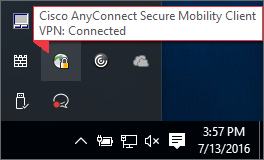- Vpn Client Software Windows 10
- Cisco Vpn Client Windows 10 Download
- Cisco Anyconnect Vpn Client Windows 10 Setup
Field Notice: FN - 70445 - AnyConnect Secure Mobility Client Users with macOS 10.15.x Might Not Be Able to Establish VPN Connections or Might Receive Pop-Up Warning Messages - Software Upgrade Recommended.
Give feedback
Crack plugins archi cad 15 system requirements. Download and configure the new UCSD Virtual Private Network (VPN) AnyConnect client on your Windows 10 Desktop and Tablet for a conventional installation.
In the right place? If you only need to access common campus Web sites or remote desktop computing, use the VPN EasyConnect option. See instructions in Virtual Private Networks at UCSD.
Notes:
Vpn Client Software Windows 10
- Cisco Anyconnect Vpn Client Windows 10 free download - Cisco VPN Client, Cisco VPN Client Fix for Windows 8.1 and 10, Cisco Legacy AnyConnect, and many more programs.
- Cisco AnyConnect Login (Windows 10) – Start Before Login 1. Press Ctrl+Alt+Delete to unlock the computer. After clicking OK at the next screen, click the Cisco AnyConnect icon located at the lower-right corner. Note: You must have an internet connection. The Cisco AnyConnect Secure Mobility client will appear.
- You must log into your computer with administrator rights.
- You need your Active Directory (AD) username and password. If you don't remember your AD username or password, you can either reset it at https://adweb.ucsd.edu/adpass/ or contact your department's systems administrator.
- ACT is testing the support of SBL (Start Before Login) on Windows-based machines.
1. Download the UCSD VPN AnyConnect client
- Download the VPN AnyConnect client (UCSD login required).
- Click Run.
2. Begin the installation


3. Accept the license agreement
- Accept the terms, and click Next.
4. Continue the installation
- Click Install.
- You may be asked if you want to allow the following program to intall software on this computer
- Click Yes
- Click Yes
Cisco Vpn Client Windows 10 Download
5. Finish the installation
- Click Finish
- Restart your system
- Settings/Power/Restart
- Settings/Power/Restart
6. Run the AnyConnect client

- Click on the Windows Start Button (this will display the Windows Start Menu). Click on All Apps and choose the Cisco Folder. Proceed with selecting the Cisco AnyConnect Secure Mobility Client to launch.
7. Authenticate with UCSD VPN using DUO 2-Step Authentication
- In the first window, enter vpn.ucsd.edu in the box and click on the “Connect” button to the right
- A second window will appear. Select your desired connection profile from the Group drop-down menu:
- 2-Step Secured - allthruucsd – Route all traffic through the UCSD VPN. Use this when accessing Library resources and CMS website staging links. This is the preferred method.
- 2-Step Secured - split – Route only campus traffic through the UCSD VPN. All other traffic goes through your normal Internet provider.
- In the Username field, enter your Active Directory (AD) username
- In the Passcode field, use the following to authenticate through DUO (See Two-Step Login: VPN for further details):
- If you receive DUO push notifications on your mobile phone enter:
- yourADpassword,push
- If you receive a DUO phone call to authenticate, enter:
- yourADpassword,phone
- If you use a DUO token to generate a passcode enter:
- yourADpassword,6digitpasscodefromtoken
- If you receive DUO push notifications on your mobile phone enter:
- Click OK.
8. Disconnect
Cisco Anyconnect Vpn Client Windows 10 Setup
- Click on the Windows Start Button (this will display the Windows Start Menu). Click on All Apps and choose the Cisco Folder. Proceed with selecting the Cisco AnyConnect Secure Mobility Client.
- When the window appears, select Disconnect.
To ask questions, request a service, or report an issue, contact the ITS Service Desk, (858) 246-4357 or ext. 6-HELP.
If you are using a University of Michigan MiWorkspace managed device, VPN software and profiles are configured for you. Please see MiWorkspace Work Remotely for more information. If you need help connecting to VPN on a managed device, please contact the ITS Service Center. These pages provide VPN configurations for unmanaged devices (e.g. research users, BYOD users).
Sponsored affiliates are able to use the VPN if they are issued a University of Michigan ID (UMID) number with their sponsorship credentials.
Download the VPN Client
- Select the appropriate VPN client for your university role:
- Staff, Faculty, Students, or Sponsored Affiliates
- Run the downloaded UMVPN-anyconnect file to install the client.
Note: If the Microsoft Defender Smartscreen popup window opens, click More info and then Run Anyway. - Follow the program prompts.
Connect Using the VPN
Important You must have a network connection to connect via the VPN.
- Launch the Cisco AnyConnect Secure Mobility client.
- Select UMVPN - All Traffic or UMVPN - Only U-M Traffic from the profile drop-down list.
- Click Connect.
- When prompted, authenticate using your university uniqname and UMICH password.
- Complete Duo Two-Factor authentication.
Note: Currently, both Duo Two-Factor authentication VPN profiles and VPN profiles that do not require Duo Two-Factor are available. Choose the Legacy option for the appropriate VPN profile if Duo Two-Factor is not needed.
